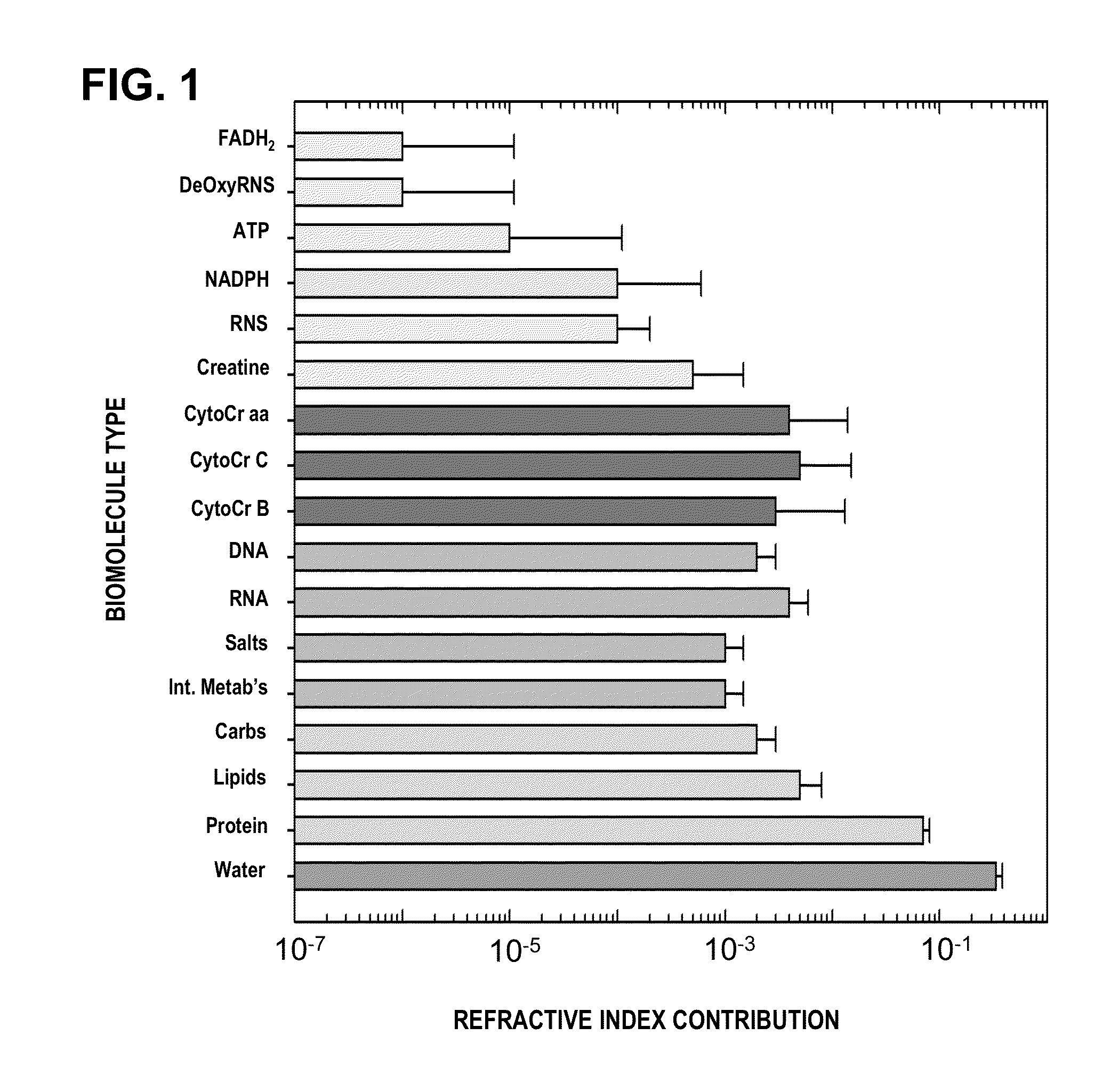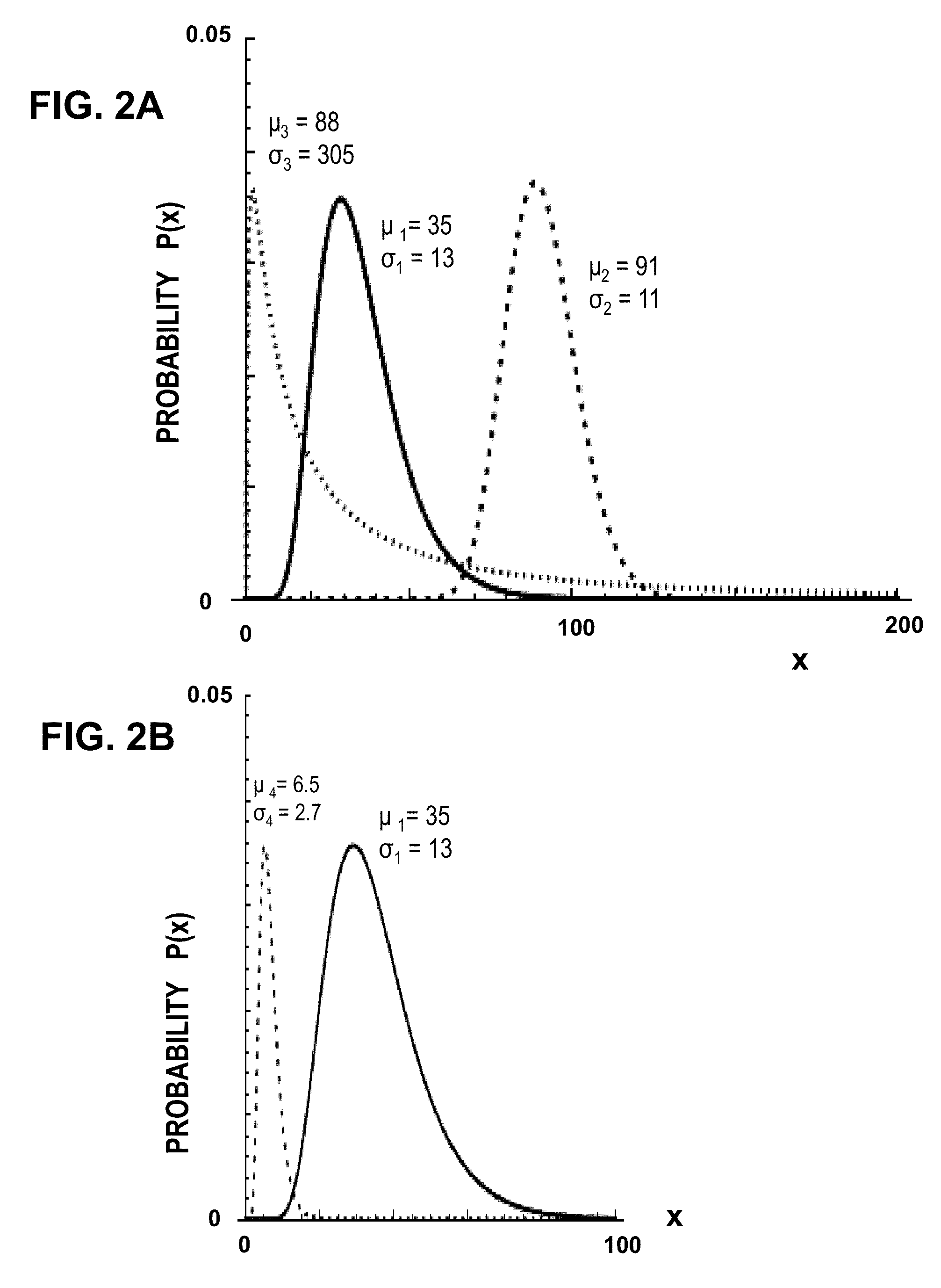Micro-Optical Cavity with Fluidic Transport Chip for Bioparticle Analysis
a micro-optical cavity and bioparticle technology, applied in the field of biological specimen analysis, can solve the problems of false readings and pathologists relying on labor-intensive microscopic examination, and achieve the effects of rapid, accurate analysis of optical properties, and calibration and maintaining measurement fidelity during operation
- Summary
- Abstract
- Description
- Claims
- Application Information
AI Technical Summary
Benefits of technology
Problems solved by technology
Method used
Image
Examples
microscopy embodiment
[0099
[0100]Another embodiment of the measurement and analysis method is to use multiple beam interference microscopy with an apparatus shown in FIG. 7 through 9. In FIG. 7 light from source 52 is directed toward a resonant cavity (with or without gain) 28 with lens 54 and then the image of the cavity is relayed with lens 24 to a imaging device 50 and / or to a spectroscopy / detector device 44 / 46. The output of these devices is linked to a computer 48 for analysis. The light source could be a laser, LED, lamp, fiber optic source or the like. Alternately the light source could be contained in the cavity (semiconductor, fluorescent material, or the like). The light interacts with the cavity to establish optical resonances that can be observed by a detector. These conditions can be detected by the imaging device or spectral device. When bioparticles are inserted into the cavity, the light interacts with the particle / cavity and produces a light signal (transmitted, reflected, scattered, flu...
PUM
| Property | Measurement | Unit |
|---|---|---|
| size | aaaaa | aaaaa |
| wavelengths | aaaaa | aaaaa |
| wavelengths | aaaaa | aaaaa |
Abstract
Description
Claims
Application Information
 Login to View More
Login to View More - R&D
- Intellectual Property
- Life Sciences
- Materials
- Tech Scout
- Unparalleled Data Quality
- Higher Quality Content
- 60% Fewer Hallucinations
Browse by: Latest US Patents, China's latest patents, Technical Efficacy Thesaurus, Application Domain, Technology Topic, Popular Technical Reports.
© 2025 PatSnap. All rights reserved.Legal|Privacy policy|Modern Slavery Act Transparency Statement|Sitemap|About US| Contact US: help@patsnap.com



